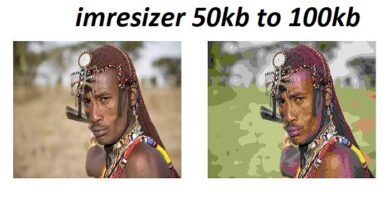Streaming vs. Traditional Media: A Comparative Analysis

In the realm of entertainment, the landscape has experienced a seismic shift in recent years, with the rise of streaming platforms revolutionizing how audiences consume content. This transformation has sparked an ongoing debate pitting streaming against traditional media, igniting discussions on their respective merits and shortcomings. In this article, we delve into a comparative analysis of streaming and traditional media, exploring their key differences, impact on industries, and future trajectories.
Evolution of Streaming:
Streaming services have emerged as formidable disruptors, leveraging technology to deliver content directly to consumers’ devices over the internet. This model, epitomized by giants like Streameast live, Netflix, Amazon Prime Video, and Disney+, offers unparalleled convenience, allowing users to access a vast library of movies, TV shows, and original programming on-demand.
The appeal of streaming lies in its flexibility and accessibility. Unlike traditional media, which adheres to fixed schedules and linear programming, streaming platforms empower viewers to tailor their entertainment experiences to suit their preferences. This on-demand nature fosters binge-watching culture, where entire seasons can be consumed in a single sitting, blurring the boundaries between episodic storytelling and cinematic experiences.
Traditional Media: Enduring Legacy Amidst Digital Disruption
In contrast, traditional media encompasses broadcast television, cable networks, and theatrical releases, rooted in decades of legacy and cultural significance. While streaming has encroached on its territory, traditional media continues to wield considerable influence, particularly in areas like live sports, news broadcasting, and blockbuster cinema.
One of the hallmark characteristics of traditional media is its curated programming, carefully scheduled to attract diverse audiences and maximize advertising revenue. Broadcast networks, for instance, rely on primetime slots to showcase premium content and capture viewership metrics—a practice largely absent in the streaming paradigm.
Comparative Analysis: Key Differentiators
Content Curation and Diversity:
Traditional media thrives on curated programming grids, offering a mix of news, sports, scripted dramas, and reality TV tailored to broad audience demographics. This approach, while effective at capturing mass viewership, can sometimes limit diversity and niche content representation.
In contrast, streaming platforms boast extensive libraries catering to a wide range of tastes and interests. From indie films to foreign language series, streaming services embrace diversity, fostering inclusivity and enabling underrepresented voices to find a global audience. Moreover, the algorithm-driven recommendation engines of streaming platforms personalize content discovery, enhancing user satisfaction and engagement.
Business Models and Revenue Streams:
The business models of streaming and traditional media diverge significantly, with each presenting unique challenges and opportunities. Traditional media relies heavily on advertising revenue, supplemented by carriage fees from cable providers and syndication deals. However, this model has faced increasing pressure from cord-cutting trends and ad-skipping technologies, prompting networks to explore alternative monetization strategies.
Streaming platforms, on the other hand, operate on subscription-based models, generating revenue through monthly subscriptions and tiered pricing plans. This direct-to-consumer approach offers greater financial stability and predictability, mitigating the impact of fluctuating advertising markets. Additionally, the global reach of streaming services enables content creators to tap into international markets, diversifying revenue streams and mitigating geographical dependencies.
Production and Distribution:
The production and distribution workflows of streaming and traditional media entail distinct processes and infrastructures. Traditional media relies on linear broadcasting protocols, necessitating meticulous scheduling and distribution logistics to reach audiences across terrestrial, cable, and satellite networks.
Conversely, streaming platforms leverage cloud-based technologies to deliver content worldwide, transcending geographical barriers and time zones. This decentralized distribution model facilitates rapid scalability and dynamic content delivery, enabling real-time updates and seamless user experiences.
Impact on Industries:
The emergence of streaming has profoundly impacted various industries, disrupting established norms and reshaping consumption habits. In the realm of filmmaking, streaming platforms have democratized content creation, providing independent filmmakers with unprecedented avenues for distribution and exposure. This democratization has fueled a renaissance in storytelling, fostering creativity and innovation across genres.
However, the proliferation of streaming has also raised concerns about market saturation and content oversaturation. As Crackstreams nfl libraries expand exponentially, consumers are confronted with choice paralysis, making it challenging for new entrants to differentiate themselves and capture market share.
Future Trajectories:
The future of streaming and traditional media is inherently intertwined, with convergence emerging as a defining trend. Traditional media conglomerates are increasingly investing in streaming ventures, recognizing the importance of digital distribution channels in an evolving landscape.
Moreover, technological advancements such as 5G connectivity and virtual reality are poised to revolutionize content consumption, blurring the lines between traditional broadcasting and streaming platforms. As these technologies mature, immersive experiences and interactive storytelling will become increasingly prevalent, reshaping audience expectations and industry dynamics.
Read more about: songs2text
Conclusion:
In conclusion, the debate between streaming and traditional media is not a binary one but rather a nuanced exploration of evolving consumption patterns and industry dynamics. While streaming offers unparalleled convenience and diversity, traditional media retains its cultural significance and enduring legacy.
Ultimately, the convergence of streaming and traditional media heralds a new era of entertainment, characterized by innovation, collaboration, and unparalleled choice for consumers. By embracing the strengths of both paradigms, content creators and distributors can navigate this shifting landscape and forge a path towards sustainable growth and creative excellence.




